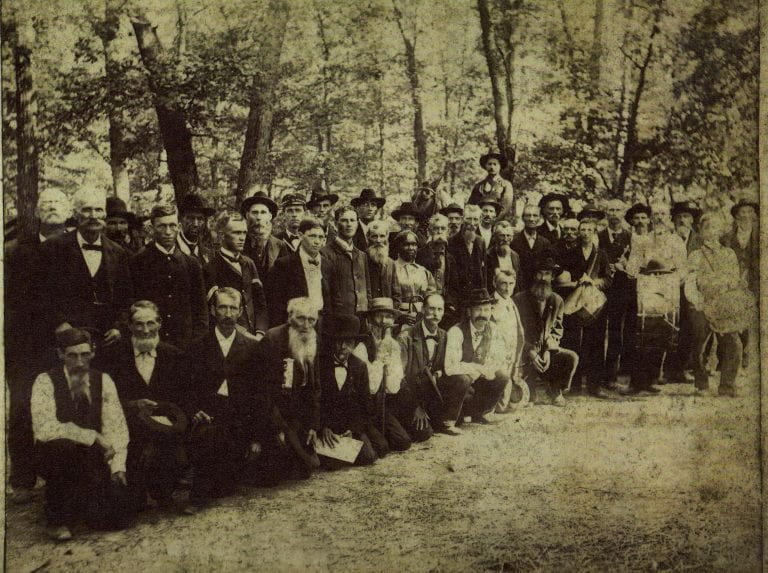Lucy Higgs Nichols was an African American who escaped slavery and became a nurse for a regiment in the Union Army during the American Civil War. Read on to learn more about one of the unsung heroes of the Civil War known affectionately as “Aunt Lucy” by the 23rd Indiana Infantry Regiment she served alongside.
Early Life
Lucy Higgs Nichols was born on April 10, 1838, in Halifax County, North Carolina. She was born enslaved to the Higgs family, who moved between the southern states of North Carolina and Mississippi, finally landing in Tennessee. Lucy escaped from the Higgs family in 1862 after learning about an impending move that would take her further south—and further from freedom. Lucy, along with her daughter Mona, managed to escape and travel roughly 30 miles to Bolivar, Tennessee. Here the two encountered the 23rd Indiana Infantry Regiment and began their legacy of service, courage and sacrifice.
Nurse in the 23rd Indiana Infantry Regiment
It was in Bolivar that Lucy gained her freedom in 1862 when she stayed with the 23rd Regiment of Indiana Volunteers. Lucy’s master searched for her, however, as a result of the Confiscation Acts of 1861 and 1862, she gained protection from the Regiment, as the men promised to not send her back to slavery. To show her appreciation, Lucy stayed with the 23rd Regiment and became their nurse, cook and seamstress. She traveled throughout the South for the duration of the Civil War. The volunteer regiment participated in the sieges at Vicksburg and Atlanta, as well as Sherman’s March to the Sea. Through it all, Lucy was dedicated to the 23rd Regiment. She stayed loyal even following the passing of her daughter Mona, who died following the surrender of Vicksburg. It was said that Mona was adored by the regiment who provided a proper funeral for the young girl. The 23rd Regiment was mustered out of service in 1865, when many of the men invited Lucy back to New Albany, Indiana.
Post-Civil War Life
Lucy settled in New Albany and kept in contact with the Regiment members, attending reunions and continuing to care for former troops. They, in turn, continued to look out for her in many ways. In 1892, Congress passed the Nurses’ Pension Act granting pensions to “all women employed by the Surgeon General of the Army as nurses, under contract or otherwise, during the late war of the rebellion.” Despite being an active member of the 23rd Regiment when Lucy applied for the pension, the Record and Pension Division of the War Department claimed they found no records of employment or payment to her. In the following years, 55 surviving veterans of the 23rd Regiment petitioned Congress for the pension Lucy rightfully earned. After being denied the pension on more than one occasion between 1892 and 1898, a special act of Congress was passed. In 1898, Lucy was approved for a monthly pension for the rest of her life. Lucy passed away on January 29, 1915 and was buried with military honors in the West Haven Cemetery in New Albany, Indiana. With no documentation of her tombstone, the exact location of her grave is unfortunately unknown.
Legacy
On July 3, 2019, a statue of Lucy Higgs Nichols and her daughter Mona was erected in New Albany, Indiana. This statue came eight years after a state historical marker was placed outside the Second Baptist Church, where Lucy was a member of the congregation. Lucy Higgs Nichols lived a life of courage and sacrifice—from her escape to serving the 23rd Regiment on the front lines throughout the Civil War to settling in New Albany. Today, we remember her life of honor, sacrifice and dedication to the 23rd Regiment.
Sources:
https://www.in.gov/history/state-historical-markers/find-a-marker/lucy-higgs-nichols/
https://www.digitalresearch.bsu.edu/digitalcivilrightsmuseum/items/show/38
https://www.newsandtribune.com/news/what-a-woman-runaway-slave-turned-civil-war-nurse-memorialized-with-carnegie-exhibit/article_eec09974-b5dd-5684-9e40-f9bb6bdd1a35.html




